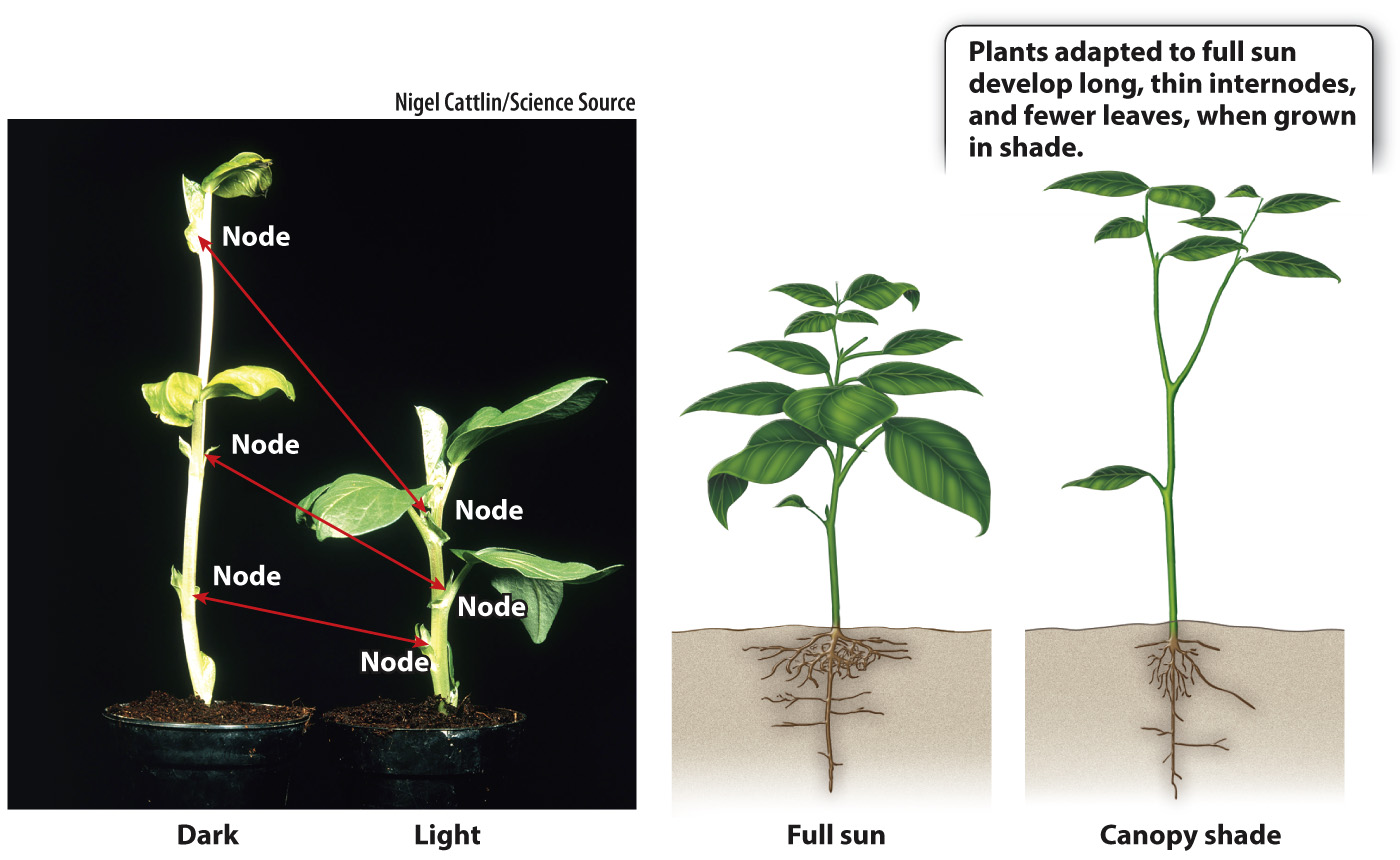Plants grow taller and branch less when growing in the shade of other plants.
A newly germinated seedling must reach the soil surface before its stored resources are used up or it will die. Seeds that germinate in the dark produce completely white seedlings with thin, highly elongated internodes and small leaves (Fig. 31.24). By putting all their resources into elongation, seedlings grown in the dark maximize their chances of reaching the light. If and when they do, internodal elongation slows markedly and green leaves expand. These dramatic changes are triggered by photoreceptors that signal the presence of light. In its transformation from a dark-

Even after a plant emerges above the soil, its ability to sense and respond to light can enhance its chances for survival. Some species are adapted for shade, producing thin leaves that efficiently use low levels of light; others grow best in direct sunlight. When such sun-
Interestingly, the effect is much less if the shade is produced by anything other than another plant. Experiments have shown that the taller, thinner stems are the result of a plant’s sensing the presence of its neighbors. The reason a plant is able to sense neighboring plants is that chlorophyll absorbs red, but not far-